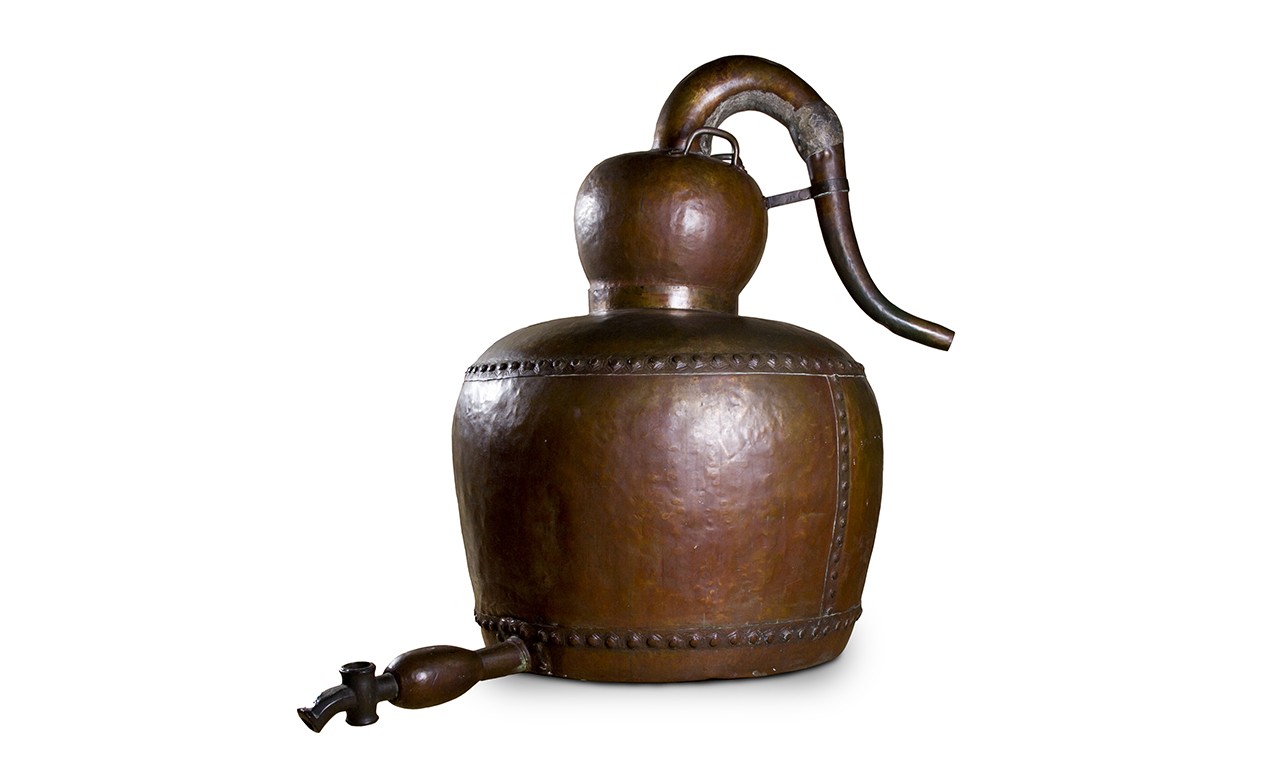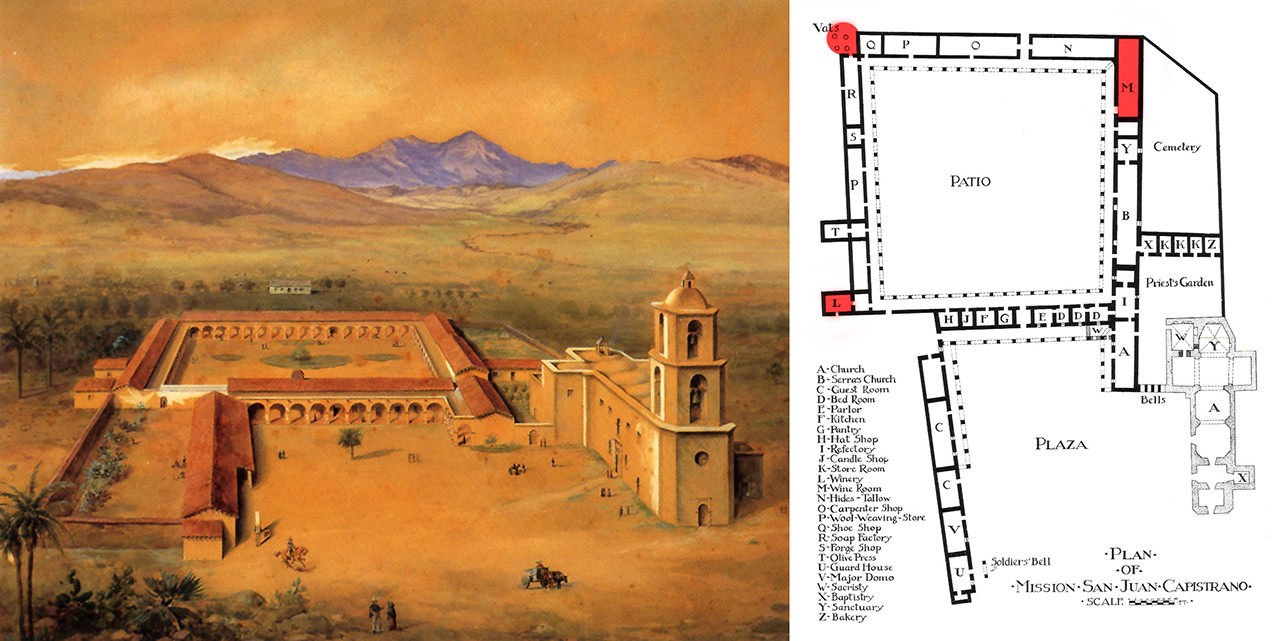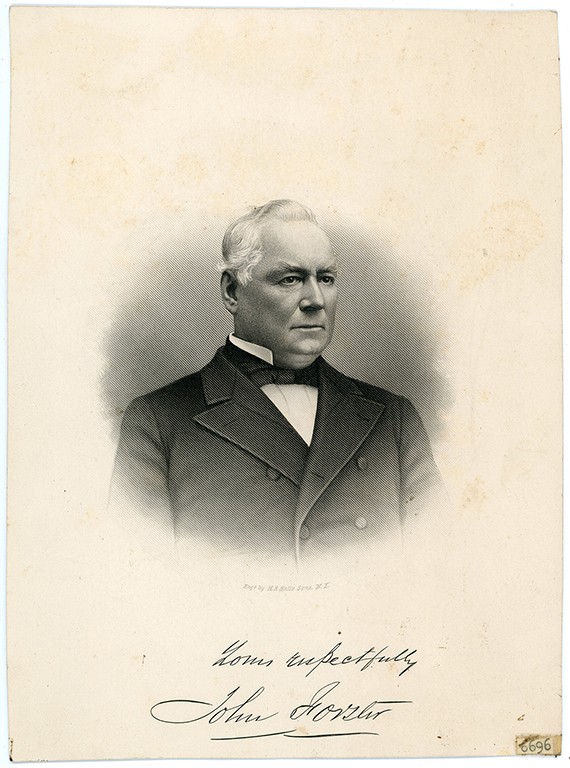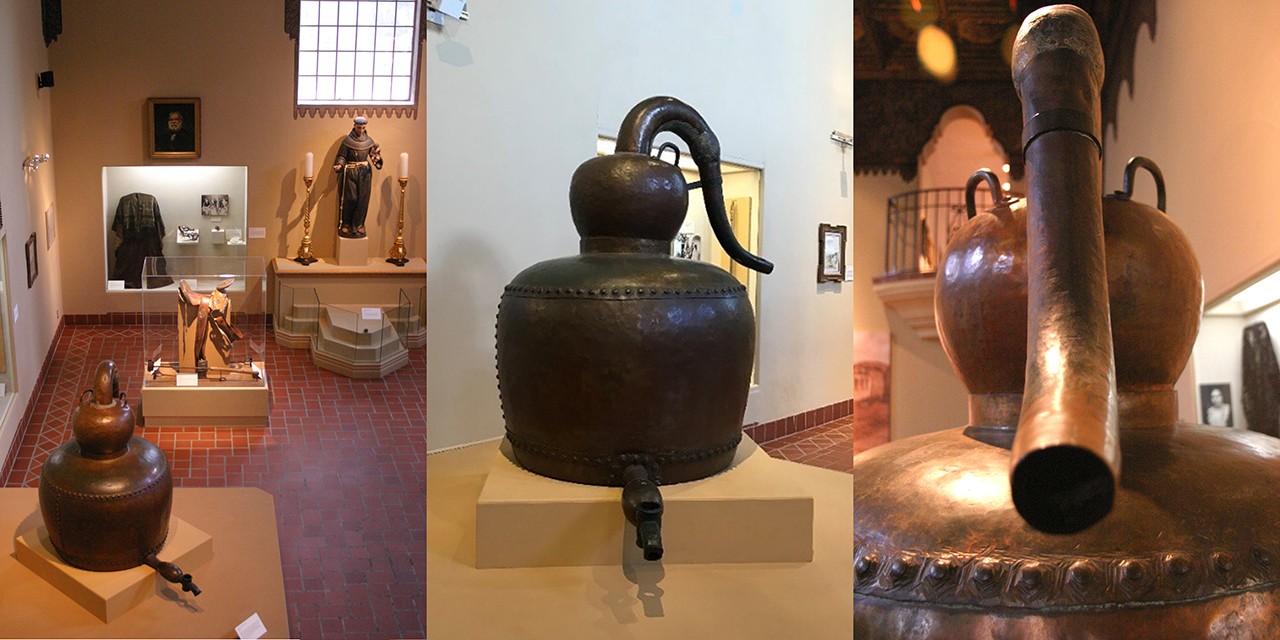 |
Brandy Still, c. 1776-1831
Southern California
Copper; 53 x 36 in.
2810
Gift of Mr. and Mrs. John Forster |
Name Brandy
The earliest brandies, used medicinally, appear to date back to 13th century France, but stories hold that the first commercial brandy was created, as many things are, almost completely by accident. In the 16th century a Dutch trader distilled wine, a process which significantly reduces the volume of a beverage, to allow more barrels of the alcoholic staple to be shipped in the same hold. The idea was that water could later be re-added to it, but many in the Netherlands took to the resulting beverage as it was, enjoying the complex flavor profiles that developed during distillation. As Europe began to expand its influence around the globe, the delights of the old world followed. This post revisits one of the Bowers’ most iconic objects, a copper brandy still that was owned by an English ex-pat in Spanish California: John “Don Juan” Forster.
 |
| San Juan Capistrano Complex c. 1806 by Behre alongside a plan view of Mission San Juan Capistrano prepared by architectural historian Rexford Newcomb |
Pressing Mission Grapes
The missions established along the west coast of the Spanish colonies were well known for their love of viticulture. Prior to 1700, Mission San Francisco Xavier in Baja California found its first vintner in Father Juan Ugarte, and as the century progressed more and more missions were adjoined by vineyards to produce wine and brandy. The first winery in Alta California was built at the nearby Mission San Juan Capistrano 13 years after the region’s initial mission was founded. Diagrams of the mission before it was destroyed in an 1812 earthquake show multiple rooms set aside just to make wine. Documents from that time show that Fray Pablo Mugartegui had a private still that he used to make brandy. Just over half a century after the first mission was founded, 17 of the 21 missions were making brandy.
 |
Don Juan Forster, c. 1874
H.B. Halls Sons; probably California
Engraving on paper; 16 3/4 x 15 in.
6696
Terry E. Stephenson Collection |
Private Fancy
The only documented owner of the still is John “Don Juan” Forster. Despite being a very important figure in the early history of California, he has been-little featured on the Bowers Blog. Forster was born in Liverpool, England in 1814 and left home for Mexico at the age of 16. By the 1833 he had arrived in Los Angeles and while working in the shipping industry earned enough to become the only non-Hispanic rancho grantee in Orange County. It helped his cause that he married Maria Ysidora Pico who was the sister of Pio Pico, a man who would later become the last Mexican governor of Alta California. An Englishman who had become a Mexican citizen, John Forster’s name appears in many of the early documents of the era as "Don Juan” Forster. Importantly, he purchased the lands on which the old Mission San Juan Capistrano sat in disrepair and made them his home.
Condensed Argument
In a previous post on this brandy still, we wrote that it was unequivocally the first brought to Alta California. However, there is some conflicting information about the origin of the still. One source indicates that it was purchased and brought back by Don Juan Forster while he was away on business. Previous Bowers curators have been skeptical about Forster’s involvement in the shipping, though, and if this was the first Brandy still in California, it could not have been shipped after 1830 as there was already a long history of brandy making by that time. This is difficult to confirm due to the lack of information on Mission San Juan Capistrano’s original distillery equipment, but given that Forster purchased the old mission grounds where the first brandy in Alta California was made, it does not seem impossible that he acquired the old still from the mission. He was certainly known as a discerning man with a reputation for producing the finest liquors and a still with a long history of production would have been attractive to him. What we know for certain is that the Bowers brandy still is the only one remaining in California which has been confirmed as having been made prior to Californian statehood. This was proven through the presence of the traditional Spanish riveting technique, similar examples in Texas and by a recent visit from researchers who determined that the 90-96% copper content would have been characteristic for the time.
 |
| Alternate views of 2810 and the Bowers Museum's Missions and Ranchos exhibition |
What Still Remains
We also know that the still at the Bowers is only part of a complete apparatus required for distillation. This tank would have been heated and the vaporous distillate would have travelled through the appropriately named swan’s neck and a condenser back into a barrel—usually this process took place multiple times. In the Bowers example only the pot still, also called an alembic, remains while the whereabouts of the coiled condenser are unknown, deepening the mystery surrounding this iconic piece of California’s alcohol history.
Text and images may be under copyright. Please contact Collection Department for permission to use. Information subject to change upon further research.





Comments